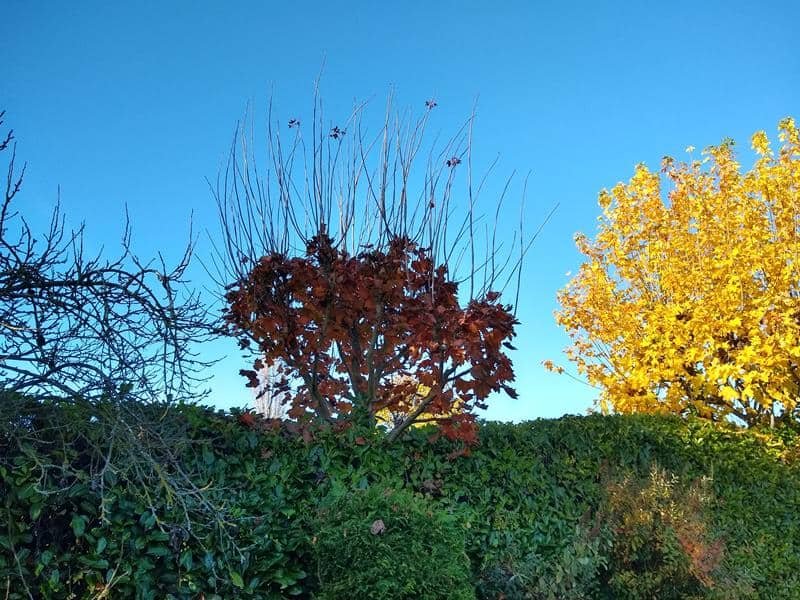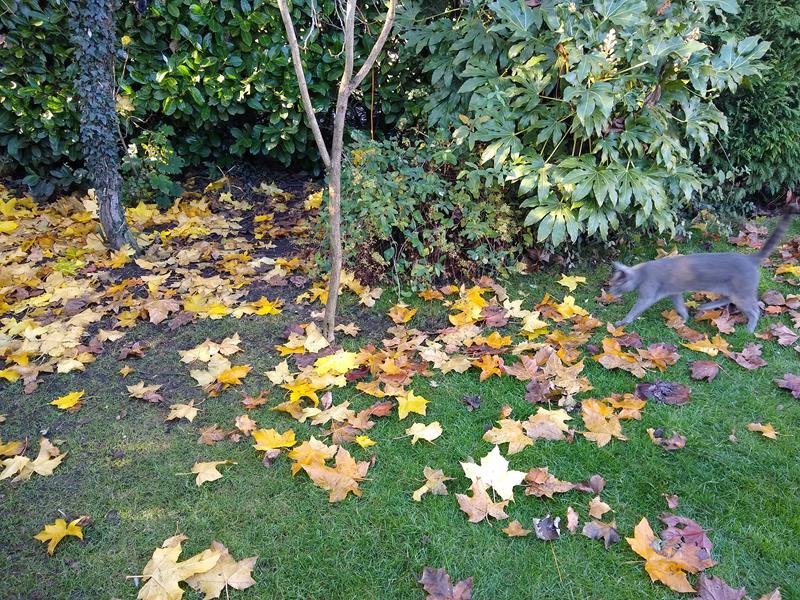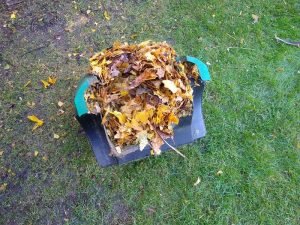Using a garden shredder to mulch leaves is a very common question. Leaf mulching is clearly a big deal for many gardeners. Every year there are lots of questions, both to us directly and on Amazon, about the best ways of mulching leaves
What is Leaf Mulching?
I wanted to check we were all on the same page about what mulching means. Wikipedia defines it as:
“A mulch is a layer of material applied to the surface of soil. Reasons for applying mulch include conservation of soil moisture, improving fertility and health of the soil, reducing weed growth and enhancing the visual appeal of the area”.
https://en.wikipedia.org/wiki/Mulch
Put another way, mulching is the practice of creating a mulch. Leaf mulching is the chopping up of leaves.
The obvious answer is “Yes”. Chopping garden waste up is what Garden Shredders are designed to do.
What Sort of Shredders are Good For Mulching Leaves?
Both impact and turbine cut shredders will happily chop up leaves. They can will achieve pretty good reduction ratios too. Garden shredders will reduce the volume of a pile of leaves by about 15 or 20 to 1.
For us, the real answer is, “Why would you want to?”
Bosch don’t really help. One of their promotional photographs shows someone happily using the plunger to force bunches of leaves through the shredder.

We get it. Falling leaves look a mess. Clearing and disposing of fallen leaves is a major chore. Bagging leaves can take a lot of time and effort. If you can put them through a shredder to reduce the volume, getting rid of the leaves can be much easier.
The Top Reason You are NOT Going to Want to Use Your Garden Shredder to Mulch Leaves
Let’s take a step back. Just because you can use your shredder as a mulcher doesn’t mean it is a good idea.
One of the big drawbacks for all electric garden shredders is the need to feed your waste through the hopper. For safety reasons the gap in the hopper is small (think small letter box size). Putting clippings and woody waste through the hopper cab be tedious but is not too big a deal. Putting leaves or other softer vegetation through the same size hole, using the plunger to push it into the hopper, and dealing with any blockages is a real pain.
There are better ways. This part of this article covers how I have managed my leaf collection and mulching before this year.
My Annual Leaf Clearing Task
I’ve mentioned many times that we have 3 Maple trees in the garden. These started as a set of three: one variegated tree, one copper and one natural maple. Over the years the base tree has grown through the variegation so there is only one variegated branch remaining. Nevertheless, the Maples are beautiful ornamental trees.

As beautiful as they are, a Maple tree has big leaves – and lots of them.

Quick Note on the Cat: Not sure how the cat got in on that photograph. He is never around if I want to photograph him. His name is Oscar. He is a Russian Blue with species identity issues.
The photographs don’t show the status of the lawn too well. About half was completely covered in the leaf fall.
In my mind there is a strong argument for leaving leaves until spring. There are distinct advantages:
- On the flower beds, fallen leaves provide insulation and suppress weed growth.
- On the lawn they will rot and provide nutrients.
- Leaving them until spring means you only clean up once in the year.
You can imagine that my argument doesn’t pass judgement with Jo for more than about ten seconds.
Second argument – it’s going to need clearing again. Let’s wait until all the leaves are off the trees.
Funnily enough – I get nowhere with that argument either. It seems I don’t pay enough attention to the last bit of the mulch definition – “enhancing the visual appeal of the area”. Jo would prefer me to clear leaves every day.
So I get it. Leaf fall looks unsightly. It’s got to be cleared.
Larger leaves, like those from our Maples, create quite a bit of volume too. Chopping the leaves in a shredder first reduces the volume – probably as much as 15 or 20:1. Disposal becomes a lot easier.
Here’s How I Have Mulched Leaves for the Last 20 Years

Yep.
No surprise here I am sure. The good old rotary lawnmower does a great job of mulching leaves.
Use a garden rake to get the leaves out of the flower beds. In truth, I find it just as quick to put on some garden gloves and quickly hoick the fallen leaves out and onto the lawn.
Don’t make any heaps – you are better off with the leaves spread reasonably evenly over the lawn.
Put the rotary mower onto a very high cut setting. Now ‘mow’ the lawn. The leaves are not generally much heavier/tougher than cutting long grass.

You’ll be amazed. All leaves cleaned up. Lots of chopped up, mulch for composting or bagging for disposal.
You can’t really tell from the photograph but most of the leaves are reduced to small pieces just oozing with juice. It’s perfect for composting or use as a leaf mulch.
This one collection box contains about 5 or 6 bags of leaves before mowing so I reckon I have easily achieved a 15:1 reduction in volume.
The lawn doesn’t look bad either.

A further positive is that some of the smallest leaf mulchings remain on the lawn. Over the winter this will rot in and provide great nutrients for the lawn.
Lawnmower – Much Better Than a Shredder But the Approach is Flawed
I am all for re-purposing garden machinery and other tools to achieve my aims. Using the lawn mower in this way has worked well for many years. There are a few problems with this approach though:
- You still must collect the leaves out of borders, off paths and patios etc.
- With the best will in the World, collecting leaves from the borders and then distributing across your lawn is going to introduce some elements of sticks, stones and last year’s prunings.
- it’s not kind to your mower. Even with the mower settings on high, a rotary mower is still going to collect and clatter some of those stones. Having a high-power rotary mower hit stones or sticks is not pleasant. At best you damage the blade. At worst we have had a stone punch a hole in the casing.
- Just as with impact shredders, the cutting efficiency of a rotary mower depends on the speed of the blade (the faster the better) and on how sharp the blade is. Cutting a pile of damp/wet leaves (even if you don’t snag any stones or left over branches) kills the edge on the blade quickly
- Not suitable for hover or mulching mowers. You definitely want a mower with a decent collection box. It’s OK to leave some mulchings on the lawn (in my opinion) but not the whole load.
- Absolutely won’t work with Robot Mowers
There are better, cheap alternatives
The biggest reason why I may move away from using my lawn mower to mulch leaves came about when I started to write a much shorter reply on the FAQ section. I thought I would quickly review leaf mulchers on Amazon. Very quickly it was clear that there are lots of purpose made, reasonably priced leaf mulching machines.
Most of the purpose build leaf mulchers do 3 jobs:
- Blower. You can get into the flower borders and beds to blow out all those leaves I have to bend down and get out by hand.
- Vacuum. You can Hoover up the leaves directly without mulching
- Mulching. You can select to chop up the leaves you Hoover. They all claim reduction rations from 10:1 to 15:1
Onto Part 2 – Detailed Review of a Top Rated Leaf Mulcher
While I am a great believer in the value of Amazon reviews there are times when getting my hands on a machine is the only way. Seeing the highly competitive prices and the incredibly positive reviews I have bought a leaf mulcher. If all goes well it will replace my 20plus years old, Black and Decker blow and vac.
If it ever stops raining (Autumn 2019 – wettest autumn ever recorded) I will get out and give it a go.
Hello there, great website, I enjoyed reading the page about shredding leaves for leafmould. I wonder, how did you get on with the leaf mulcher? I think an update is called for!
Many thanks,
Jessie